The educational materials listed on this page are about Soil Quality/Health.
Farmers and ranchers use the term soil health to describe the condition of the soil. Scientists usually use the term soil quality, but both refer to the same idea — how good is the soil in its role of supporting the growth of high-yielding, high-quality, and healthy crops? Healthy soil generates higher crop yields, it absorbs and holds rainfall, and erosion is therefore reduced. The information here will show you how to improve soil fertility and build healthy soil. Two comprehensive books to consult are Building Soils for Better Crops and Managing Cover Crops Profitably.
Crop rotation, the use of diverse soil management practices, composting, and cover crops all contribute to healthy soil by conserving and building soil organic matter, absorbing rainfall, and retaining crop residues on the soil surface. Major conservation practices include conservation tillage, contour farming, strip cropping, terraces, diversions, and grassed waterways.
Soil consists of four parts: mineral solids, water, air, and soil organic matter. All four are important characteristics of fertile soil.
Soil organic matter consists of three parts: living organisms, fresh residues, and well-decomposed residues. The living part of soil organic matter includes a wide variety of microorganisms, such as bacteria, viruses, fungi, protozoa and algae. It includes plant roots as well as insects, earthworms, and larger animals in the soil. The fresh residues consist of recently deceased microorganisms, insects, earthworms, old plant roots, crop residues and recently added manures. This part of soil organic matter is the active, or easily decomposed, fraction. As soil organic matter is decomposed, many plant nutrients are released. The well-decomposed organic material in soil is called humus.The already well-decomposed humus is not a food for organisms, but its very small size and chemical properties make it an important part of a healthy soil. Humus holds on to some essential plant nutrients, storing them for slow release to plants. Good amounts of soil humus can both lessen drainage and compaction problems that occur in clay soils and improve water retention in sandy soils by enhancing aggregation, which reduces soil density, and by holding on to and releasing water.
The soil water, also called the soil solution, contains dissolved plant nutrients and is the main source of water for plants. Soil nutrients are made available to the roots of plants through the soil solution. The air in the soil provides roots with oxygen and helps remove excess carbon dioxide from respiring root cells. When mineral and organic particles clump together, soil aggregates are formed, resulting in a healthy soil with good soil structure and more spaces, or pores, for storing water.
Showing 1-11 of 11 results

Soil Invertebrates as Bioindicators Pocket Guide and Soil Life Website
Informative pocket guide explaining the importance and identification of soil invertebrates. Soil Life Website Informational webpage serving as a centralized location for Soil Life topics.
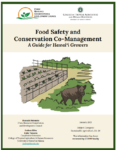
Food Safety and Conservation Co-Management: A Guide for Hawai‘i Growers
A guide for Hawaii farmers interested in improving their efforts towards food safety and improving natural resource conservation, through co-management practices. This document acts as a resource to both learn more about suitable techniques while reviewing pros and cons as shared by local producers, as well as provide template language and guidance towards implementing such […]
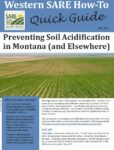
WSARE Quick Guide: Preventing Soil Acidification in Montana (and Elsewhere)
Quick guide to preventing soil acidification in Montana.
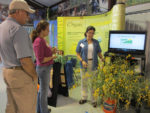
A Sunn Hemp Cover Crop for Soil Health and Nematode Management
These University of Hawaii fact sheets and virtual field day explain how to use sunn hemp as a cover crop to control weeds, nematodes and other pests, add soil nutrients, prevent erosion, and contribute to a more robust and complex community of beneficial nematodes. Available fact sheets include:
Sustainable Agriculture Farming Systems Project
Public concerns regarding pesticide misuse, food safety, water use and contamination, and depletion of non-renewable resources have motivated the reevaluation of some of the practices of conventional agriculture and the exploration of alternative, more sustainable approaches to growing food. In 1988, the Sustainable Agriculture Farming Systems (SAFS) project was established at the University of California’s […]
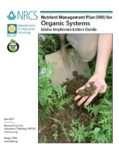
Nutrient Management Plans: Idaho
This is a collaborative project to build the capacity of conservation professionals to assist organic and transitional farmers in planning and implementing conservation practices through the Environmental Quality Incentives Program Organic Initiative. This guide is part of a series of guides created by Oregon Tilth for use by NRCS staff in the Western Region. This document is […]
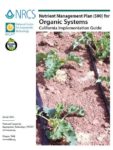
Nutrient Management Plans: California
This is a collaborative project to build the capacity of conservation professionals to assist organic and transitional farmers in planning and implementing conservation practices through the Environmental Quality Incentives Program Organic Initiative. This guide is part of a series of guides created by Oregon Tilth for use by NRCS staff in the Western Region. This document is an instruction […]
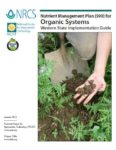
Nutrient Management Plans: Western Region
This document is an instruction guide for creating and implementing a nutrient management plan on certified or transitioning organic lands in the Western Region.
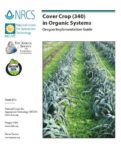
Cover Crops in Organic Systems: Oregon
This document provides an overview of how the USDA Natural Resources Conservation Service NRCS Cover Crop 340 conservation practice can be implemented on organic operations in Oregon.
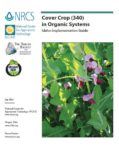
Cover Crops in Organic Systems: Idaho
This document provides an overview of how the USDA Natural Resources Conservation Service NRCS Cover Crop 340 conservation practice can be implemented on organic operations in Idaho.
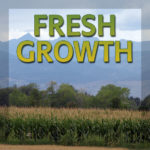
Fresh Growth Podcast
Fresh Growth: Approaches to a More Sustainable Future from Western Ag Practitioners introduces you to farmers and ranchers from around the western United States who are finding innovative sustainable practices that enrich the natural resources we all care about. These successful multi-generational operations experiment with new ideas and are making it pay. Listen in as […]